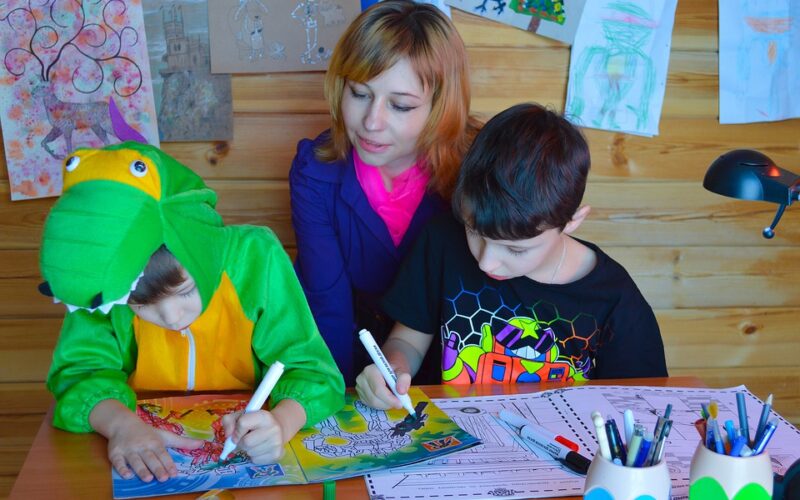Education has undergone a significant transformation over the past few decades, thanks to rapid technological advancements. From the early days of computer labs and internet research to today's sophisticated AI-driven learning platforms, technology continues to reshape the educational landscape. These changes are not just limited to the tools students use but extend to how they learn, interact, and prepare for future careers.
Digital classrooms and online learning
One of the most notable shifts in education has been the migration from traditional classrooms to digital ones. Online learning platforms like Coursera, Khan Academy, and edX have made it possible for students to access quality education from anywhere in the world. These platforms offer courses on a wide range of subjects, often for free or at a fraction of the cost of traditional education. The flexibility to learn at one's own pace and schedule has made education more accessible, especially for working professionals and those in remote areas.
The COVID-19 pandemic further accelerated this shift, forcing educational institutions to adopt online learning en masse. Tools like Zoom, Microsoft Teams, and Google Classroom became household names, offering virtual classrooms that could replicate many aspects of in-person learning. While this sudden transition came with its challenges, it also highlighted the potential for long-term, blended learning models that combine online and offline education.
Artificial intelligence and personalised learning
Artificial intelligence (AI) is another game-changer in the realm of education. AI-powered tools can personalise learning experiences to suit individual student needs, making education more effective and engaging. For example, platforms like DreamBox and Knewton use AI algorithms to adapt lessons based on a student's performance, offering tailored exercises and feedback. This personalised approach helps address learning gaps and accelerates mastery of subjects.
Additionally, AI is being used to automate administrative tasks such as grading and attendance tracking, freeing up educators to focus more on teaching and student interaction. Chatbots and virtual assistants are also making their way into educational settings, providing instant support and answering common questions, thereby enhancing the overall learning experience.
Gamification and interactive learning
Gamification has emerged as a powerful tool to make learning more engaging and enjoyable. By incorporating game-like elements such as points, badges, and leaderboards, educational platforms can motivate students to complete tasks and achieve learning goals. Tools like Kahoot!, Quizizz, and Classcraft are popular examples of gamified learning platforms that have gained traction in classrooms worldwide.
Interactive learning modules that use augmented reality (AR) and virtual reality (VR) are also becoming more prevalent. These technologies offer immersive experiences that can bring complex subjects to life. For example, medical students can use VR simulations to practice surgeries, while history students can take virtual tours of ancient civilizations. These interactive elements not only make learning more engaging but also help in better retention of knowledge.
Collaborative tools and global classrooms
Technology has also made it easier for students to collaborate and learn from one another, regardless of geographical boundaries. Cloud-based tools like Google Drive, Slack, and Trello enable real-time collaboration on projects, making group work more efficient and manageable. Students can easily share documents, brainstorm ideas, and provide feedback, all within a single platform.
Furthermore, social media and online forums have created global classrooms where students can connect and learn from peers around the world. Websites like Reddit, Stack Exchange, and dedicated Facebook groups offer platforms for students to ask questions, share resources, and discuss topics of interest. This global interaction not only broadens perspectives but also fosters a sense of community among learners.
Challenges and future prospects
While the integration of technology in education offers numerous benefits, it also comes with its set of challenges. Digital divide remains a significant issue, with many students in low-income areas lacking access to necessary devices and internet connectivity. Cybersecurity and data privacy are other concerns, as educational institutions increasingly rely on digital tools and platforms.
However, the future of edu-tech looks promising. Emerging technologies like blockchain for secure credentialing, AI for predictive analytics, and 5G for enhanced connectivity are set to revolutionize education even further. As these technologies continue to evolve, they will likely address many of the current challenges and open up new possibilities for innovative learning experiences.
How to stay ahead
For educators and institutions looking to stay ahead in this rapidly changing landscape, continuous learning and adaptation are key. Keeping abreast of technological advancements, investing in training, and fostering a culture of innovation will be crucial. By leveraging the power of technology, we can create more inclusive, engaging, and effective educational environments for all.
The edu-tech revolution is well underway, transforming every aspect of how we learn and teach. While challenges remain, the benefits far outweigh the drawbacks, promising a brighter, more accessible future for education.













